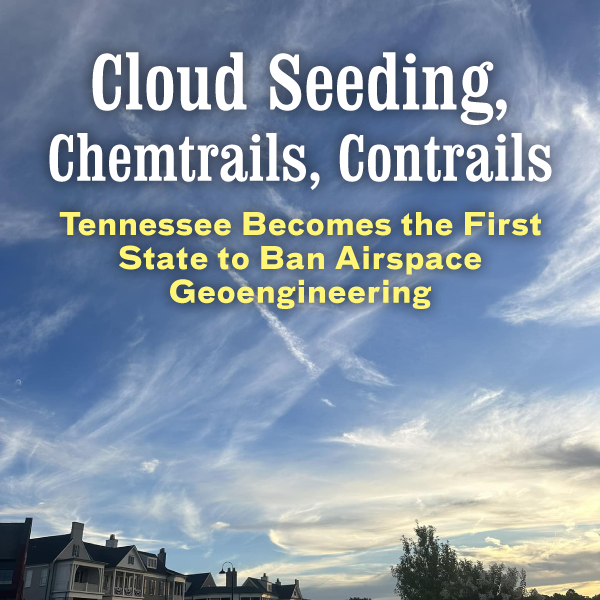
The Tennessee General Assembly passed a bill earlier this year focused on preventing geoengineering, a practice that modifies the Earth’s atmosphere to manipulate the weather. The new law, which went into effect July 1, 2024, forbids the intentional release of chemicals into the air for these purposes, making Tennessee the first state to pass such a law banning geoengineering.
“The intentional injection, release, or dispersion, by any means, of chemicals, chemical compounds, substances, or apparatus within the borders of this state into the atmosphere with the expressed purpose of affecting temperature, weather, or the intensity of the sunlight is prohibited,” according to the bill.
Republican Senator Steven Southerland out of Morristown proposed the legislation, with 25 other senators co-sponsoring the bill.
The bill outlaws any form of aerial weather modification altogether, such as cloud seeding methods which can assist with prolonged droughts.
“Cloud seeding is a weather modification technique that improves a cloud’s ability to produce rain or snow by introducing tiny ice nuclei into subfreezing clouds,” said WSMV’s meteorologist Cruz Medina. “You have clouds that already contain moisture, and you introduce something that will let go of that moisture in the form of rain or snow.”
To release the moisture, a discharge called silver iodide is released from an aircraft, which acts as a trigger that encourages formations of ice crystals within the cloud. Flares filled with silver iodide are attached to the wings of the plane, where silver iodide is emitted into the cloud layer of the atmosphere. The compound acts like a magnet for water, enhancing the chances of precipitation by up to 15 percent. Cloud-seeding programs exist across the Western United States, but are not prevalent in the Southeastern United States.
While silver iodide can be found in nature in trace amounts of soil, the compound used in agricultural practices is created by fusing iodide solution with silver nitrate to form a yellowish solid state.
Dr. Vandana Rai, a prosthodontist from Sri Rajiv Gandhi Dental College, says that those who live in areas where the compound is used for cloud-seeding practices could be at risk when inhaling air from the atmosphere.
“Unfortunately, the use of silver iodide has been linked to numerous health risks, including toxicity, reproductive disorders, developmental defects and cancer,” Dr. Rai said. Infants and young children can also be at higher risk for silver iodide toxicity, with symptoms including vomiting, difficulty breathing, and gastrointestinal complications.
Despite these concerns with the safety of the chemical compound, experts such as Dr. Nayana Ambardekar, a professor of medicine at Emory University, contend that the risks of cloud seeding are insignificant.
“There is a lot more iodine in iodized salt (table salt) than there is in this form of rainwater,” said Ambardekar. “The concentration of silver in a storm from cloud seeding is far below the accepted limit of 50 micrograms per liter.”
Kristen Meghan served as a bio-environmental engineer with the U.S. Air Force before she started digging into weather manipulation and what her office did.
“The climate change we need to be worried about is manmade climate engineering, also known as geoengineering,” she said. “I thought that was insane. Why would we do that—modify the weather using hazardous materials in our atmosphere?”
Meghan, who now considers herself a geoengineering whistleblower, discovered that the U.S. government, and others around the world, were injecting “nanoparticulate metals”—various sulfates, barium, positronium and aluminum, as well as silver iodide—into the atmosphere.
“It’s getting into the food, it’s getting into the soil,” she said. “It really shook the core of my oath.
“If you are modifying the weather, you are messing with Mother Nature. It does not make sense when you are altering nature where things are not naturally supposed to occur.”
Aside from cloud seeding, among the ideas that helped push Senate Bill 2691 to be signed into law is the chemtrail theory: the idea that trails left by jet engine fuel in the sky could be a sign of sinister intent by government to use aviation against the population in harmful ways, such as dispersing chemicals through the airspace.
“It’s been going on a long, long time,” Republican Senator Frank Niceley told NBC News. “If you look up—one day, it’ll be clear. The next day [the skies] will look like some angels have been playing tic-tac-toe. They’re everywhere. I’ve got pictures on my phone with X’s right over my house. For years they denied they were doing anything.”
According to David Keith, a professor of applied physics at Harvard’s School of Engineering and Applied Sciences, “Chemtrails refer to the theory that governments or other parties are engaged in a secret program to add toxic chemicals to the atmosphere from aircraft in a way that forms visible plumes in the sky, somewhat similar to contrails.”
Various speculations for the motivations of chemtrail spraying consist of sterilization of the population and reduction of life expectancy, aside from weather control.
Many of the trails in the sky simply represent contrails produced by jet engine exhaust, containing water vapor, carbon dioxide, nitrogen and other emissions. When the exhaust mixes in the air at high altitudes, the stream freezes and forms into ice crystals, appearing as white stripes amongst a blue sky.
“The challenge here is that the whole chemtrails conspiracy has blurred and subsumed all these distinct technologies with distinct aims, which makes it challenging to disentangle these theories,” stated Justin Mankin, a climate scientist at Dartmouth College. “Policymakers, instead of relying on science to appropriately debunk conspiratorial belief, have rendered it [legitimate] through legislative action.”
But some who notice the lingering trails in the sky just ask that folks observe and explore on their own. While, yes, jet engines do indeed leave contrails, those generally disappear within a couple of minutes at the most, even under the most favorable conditions (high humidity) for them lingering the longest, observers say.
Other streaks across the sky, ones that last for hours, will appear much different from the fuel exhaust from planes. While the source of these and the intent may be a mystery, “Hopefully, we can find the answers in the future. Until then, just look at the sky with an open mind and understanding of what a contrail actually looks like compared to other ‘stuff’ that is up there,” one curious Middle Tennessee farmer said. “Contrails [fuel exhaust] are only visible for minutes or seconds as opposed to hours. This is kind of like looking at real money to be able to spot the counterfeit.”
Although Tennessee lawmakers do not have clear proof that hazardous chemicals are being released by planes in the state of Tennessee—and despite the fact that there is no flight history of cloud-seeding aircraft in the state—the law prohibiting the injection of chemicals into the atmosphere found traction in the Tennessee Legislature.
The variety of appearances to these trails in the sky can arise from a wide array of factors. Humidity, temperature and difference in altitude are some of the ways contrails can remain in the sky longer than at other times. The time of day can also affect the visibility of contrails, with some trails brightening due to the position of the sun in the sky.
Sailors out at sea have been known to use these contrails to forecast the weather for the day, where on clear days one could expect to see a short-lived contrail and on a bad weather day the contrail would persist throughout the sky, foreshadowing the rain that would follow on a humid day.
Still, plenty of state residents raise suspicions regarding what is happening overhead.
One Tennessee resident pointed out the oddities of trail patterns throughout the sky through a recent Facebook post. “I know it’s been going on in Nashville heavily for at least a decade. Nowadays they do a lot at night while people are sleeping,” said Johnathan Ramirez.
Other onlookers link the trails in the sky to the rise in autism, Alzheimer’s, cancer and mental illness.
“We’re being sprayed with chemicals without our consent,” another local resident, Cody Parish, commented. “It’s corporate and government control of living organisms. I think there are different agencies using aerosols for different purposes. Some to block the sun ‘because of climate change’ and some to cause rain. . . . It’s a worldwide phenomenon with the majority of the governments partaking in the practice.”
One Tennessean said she watched nine planes flying in patterns above Clarksville.
“I’ve never seen more than four, but today topped it all,” according to Pauline Mei. “They spray aluminum and barium. They make us sick . . . allergies, respiratory infections, etc.”
Many scientists and aviators dismiss concerns, maintaining that cloud seeding for weather manipulation purposes poses little risk, and all other streaks observed are natural or the result of jet engine emissions freezing.
“Increasing appearance of contrails and cirrus cloudiness is a fixture of global aviation operations,” said Dr. David W. Favey, director of the Chemical Sciences Laboratory at the National Oceanic and Atmospheric Administration.
Aside from all of this is the question of what jurisdiction state governments hold regarding their airspace. The federal government delegates sovereignty over the airspace to the Federal Aviation Administration, which holds authority of regulating all navigable airspace in the United States. However, both Senate Bill 2691 and the FAA acknowledge the state’s rights to prosecute crimes committed on board aircraft within a state’s borders, including all airspace. This allows for Tennessee’s General Assembly to legislate what activity is acceptable when the aircraft is in its airspace.
Aircraft emissions are typically regulated by the U.S. Environmental Protection Agency, with the agency’s Clean Air Act calling for the “establishing of aircraft engine emissions standards for any air pollutant that could reasonably be anticipated to endanger public health or welfare.” The Department of Transportation oversees and enforces the standards set by the EPA, and the DOT chose to delegate responsibility of this oversight to the FAA, who reviews and approves engine emissions certification levels regularly.
The new Tennessee law’s enforcement falls on the Tennessee Department of Environmental Conservation. TDEC clearly states its commitment to enforcement, stating, “Compliance with environmental laws is our goal. Environment and Conservation seeks to maximize compliance by providing increased access to timely public information about our enforcement activities,” via its website.
Violators of the law could be charged with a Class C misdemeanor offense and fined up to $10,000 per day for each violation cited.
However, concerns have grown among Tennesseans about how to properly enforce the chemical injection ban.
Tennessee is the first state to pass such a geoengineering bill, but other states, including Illinois, Kentucky, Minnesota and Pennsylvania, are also attempting to pass anti-geoengineering legislation into law.
___
Those who observe violations of the law can report the offense to TDEC’s Air Pollution Control by calling 615-532-0554.



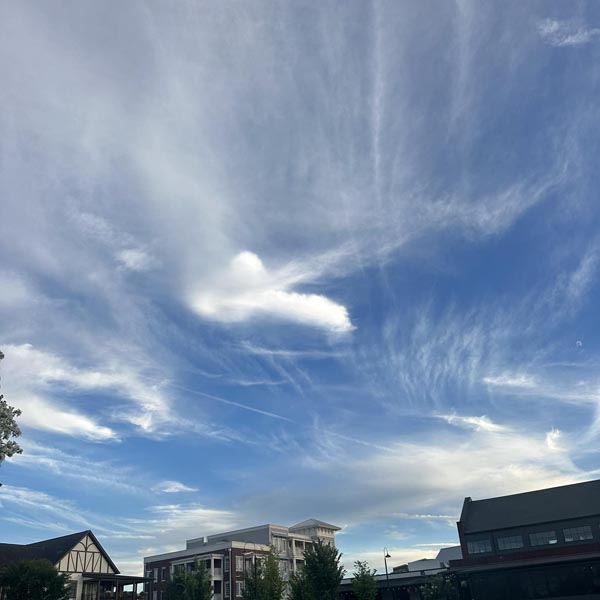
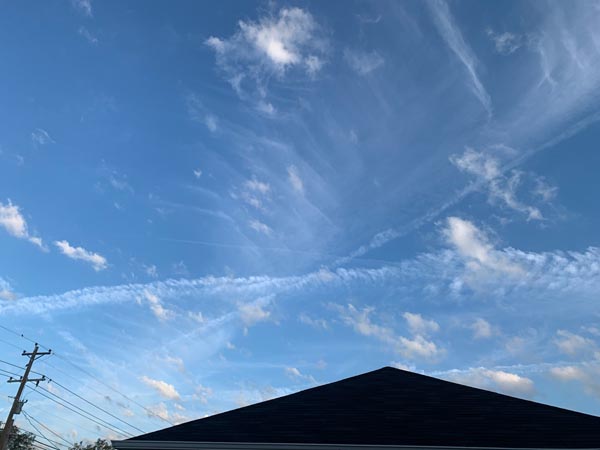
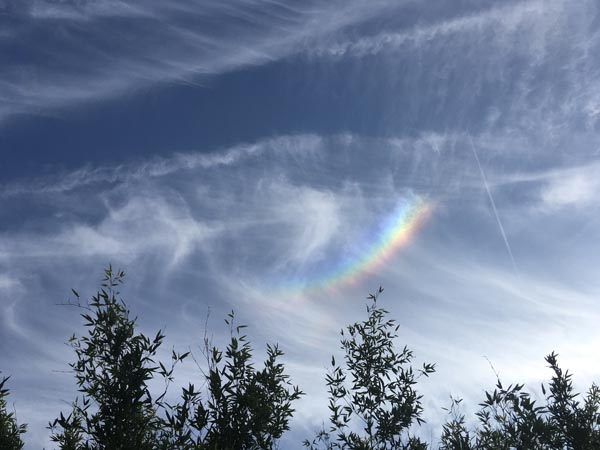
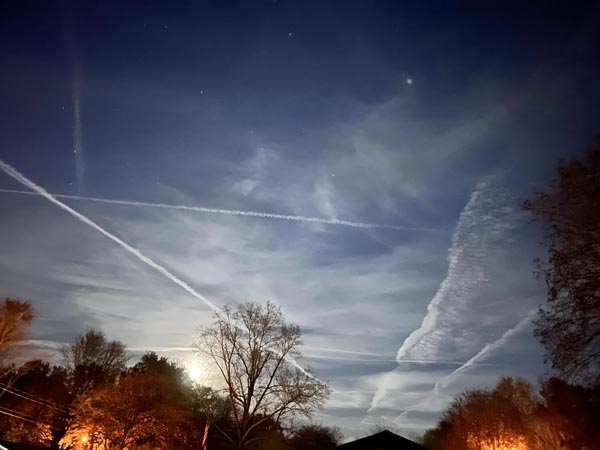
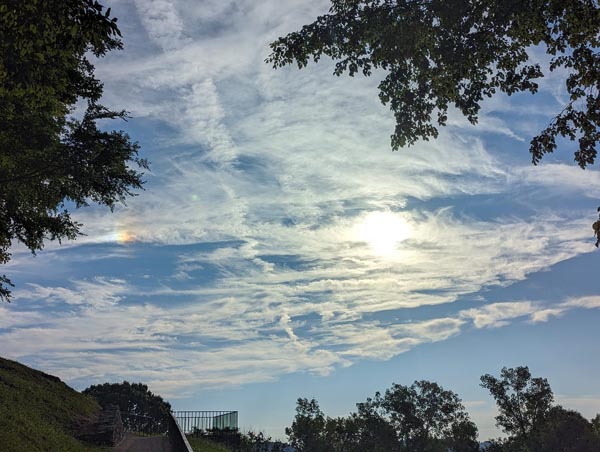
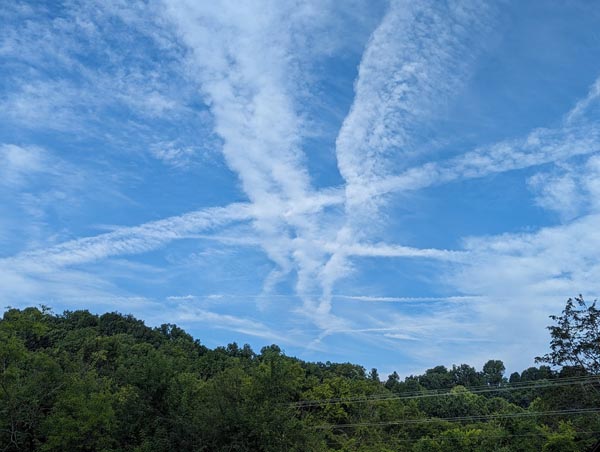
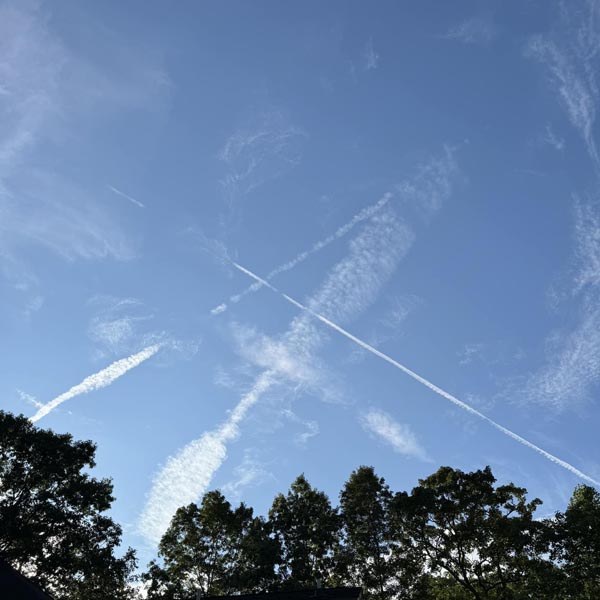
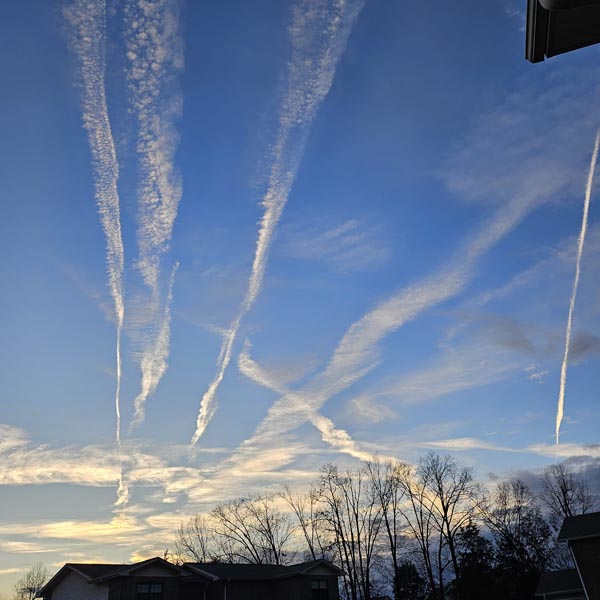
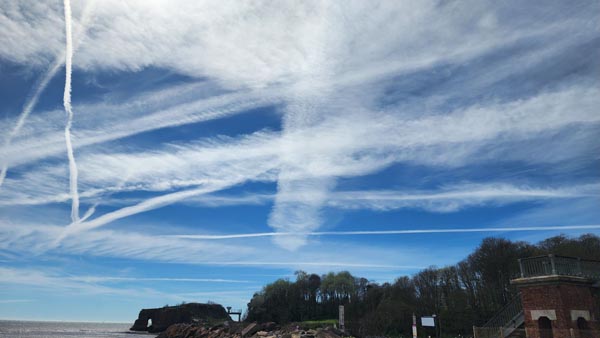











Interesting that the main people that proposed & supported the bill were heavily on the receiving end of hurricane Helene. Was this punishment for being in opposition?
Comment November 17, 2024 @ 11:14 am
In extreme East Tn. on any given day anyone can watch them doing this. Completely covering the sky, the trails ‘blow out’ but the DoNot dissipate. It causes a dull haze that is not humidity. At times gardens and other plant life stop producing roots.
WHY ARE THEY STILL DOING IT IF ITS ILLEGAL?
Comment November 18, 2024 @ 4:00 pm
They are still spraying the government never stopped spaying. Just look up sometimes and inspect the sky. I believe ot causes mucus which leads to sickness
Comment December 11, 2024 @ 6:26 pm
Middle Tennessee State University stores the chemicals while the trainer pilots release them during training with future pilots.
Comment March 26, 2025 @ 3:29 pm